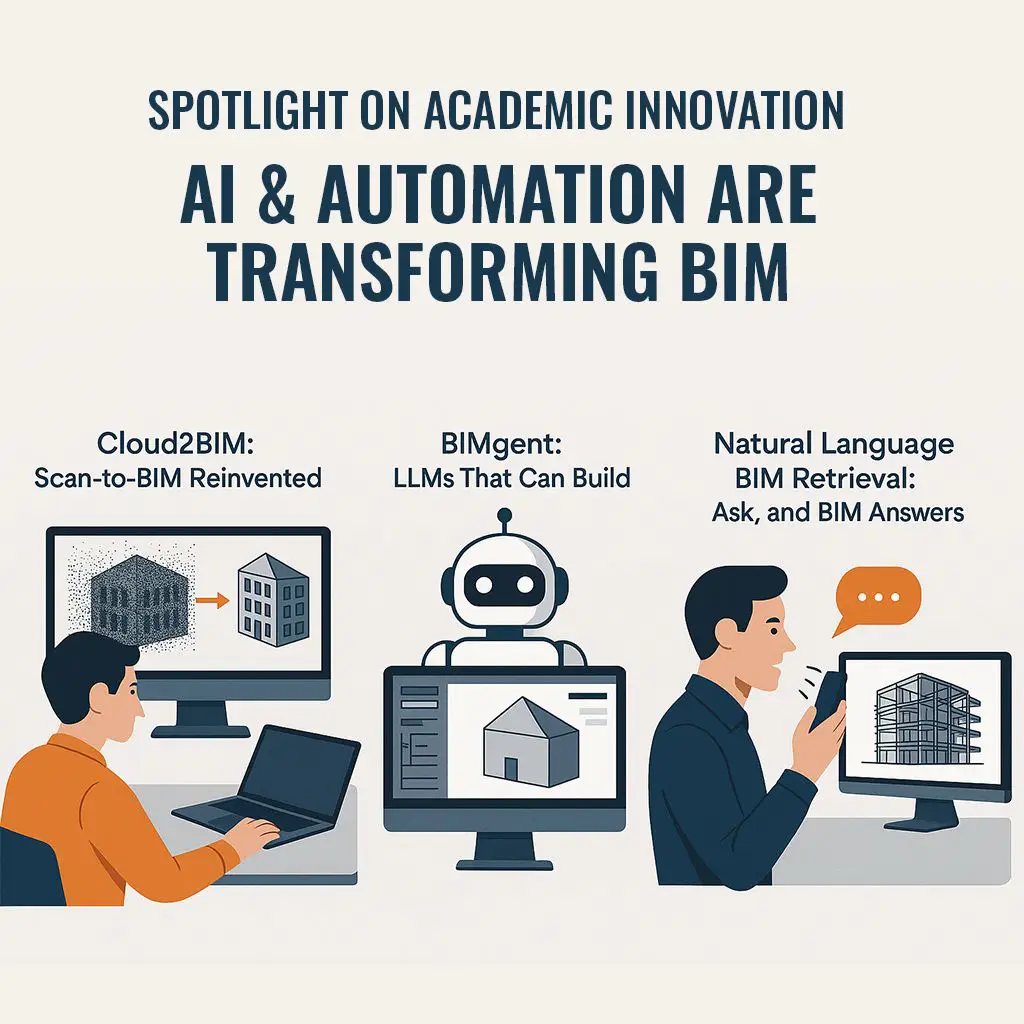Download Ready
Thanks for your interest! Your syllabus is now ready to download.

August 01, 2025
2 Min Read
As the AEC industry accelerates toward BIM 2.0, academic institutions and research labs are delivering groundbreaking tools that blend automation, artificial intelligence, and natural language processing, reshaping how we interact with digital building models.
This open-source pipeline is capable of converting raw point-cloud data into IFC-compliant BIM models up to 7x faster than traditional methods. Especially valuable for renovation, retrofit, and heritage projects, Cloud2BIM automates what was once a time-consuming manual process, bringing speed and accuracy to complex geometry conversion.
BIMgent introduces an autonomous agent system that uses Large Language Models (LLMs) to perform real-time GUI-based modeling inside BIM software environments. Early research shows a 32% success rate in completing architecture-related modeling tasks, far ahead of baseline tools. It opens the door to AI-assisted design automation in real-world workflows.
Unlike many fragmented solutions, RIB offers a fully integrated CMS ecosystem that bridges design, cost planning, scheduling, and execution, eliminating the need for multiple disconnected tools. The result is better coordination, reduced delays, and improved cost efficiency.
Imagine being able to search and navigate BIM models using plain text or voice commands. This research initiative enables users to query BIM data semantically, mapping directly to IFC elements, making model data instantly accessible, even to non-technical professionals. This innovation is particularly promising for on-site applications and mobile-first project teams.
These innovations represent a growing trend: BIM is no longer just about modeling—it’s becoming intelligent, accessible, and automated. At BIM Cafe, we’re watching closely as these technologies move from research labs into commercial workflows—and preparing our learners to work alongside them.